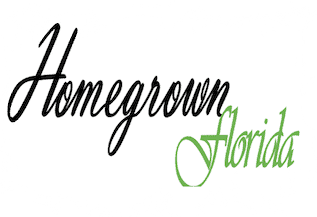Last Updated on March 1, 2024 by Homegrown Florida
In our previous discussion, we delved into our 2023 goals and celebrated the successes we achieved. Now, with the dawn of a new gardening year, it’s time to convert those goals into a tangible Spring Garden plan. Join me on this journey as I guide you through the step-by-step process of crafting a comprehensive Spring Garden plan. Unlike previous planning sessions, this time we’re doing it together, giving you a glimpse into my mindset and decision-making process. Let’s transform aspirations into action!
Step 1: Define Your Goals:
Our 2024 goals include establishing a one-year supply of potatoes, peas, and hot peppers, enhancing the flower variety, cultivating more medicinal plants, and diving into the art of preserving through tomatoes and whole meals.
Step 2: Identify Must-Grow Crops:
Breaking down the goals, our top-priority crops are potatoes, peas, hot peppers, tomatoes, and medicinal plants. These will occupy prime spots in the garden.

Step 3: Prioritize Vegetable Selection:
Listing down potential vegetables for the Spring Garden, we’re focusing on warm-weather crops. The list includes dry beans, green beans, corn, cucumber, eggplant, melon, peas, peppers, potatoes, summer squash, winter squash, tomatillos, tomatoes, and watermelons.
Step 4: Eliminate Unwanted Vegetables:
Trimming down the list, we remove eggplant and summer squash based on personal preferences and a previous bumper crop of tromboccino squash. Corn takes a break this season due to space constraints and past challenges with organic fertilizers.

Step 5: Prioritize Remaining Vegetables:
Arranging the remaining vegetables in order of preference, melons take the lead, followed by winter squash, dry beans, tomatillos, cucumbers, watermelons, and green beans.
Step 6: Map Out Garden Beds:
Using a rough sketch of the garden layout, we allocate beds based on the specific needs of each crop. Trellises, bamboo stakes, and existing structures play a crucial role in determining the placement of tomatoes, melons, and tomatillos.
Bed Assignments:
- Bed 1: Tomatoes (Trellis panels)
- Bed 2: Potatoes
- Bed 3: Peas (A frame trellis) and Tomatillos
- Bed 4: Hot Peppers
- Bed 5: Sweet Peppers
- Bed 6: Melons (Arch trellis)
- Bed 7: Green Beans and Cucumbers
- Bed 8: Winter Squash (Palm Tree area)
- Bed 9: Dry Beans (Between tomatoes)

With every inch of the garden assigned a purpose, we’ve turned our goals into a tangible plan. The careful selection of crops, thoughtful placement, and consideration of plant needs will set the stage for a bountiful Spring Garden.
If you need help designing your garden plan, make sure to get a copy of my Free Garden Planner here. Happy gardening!



